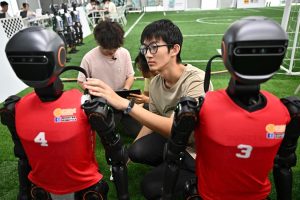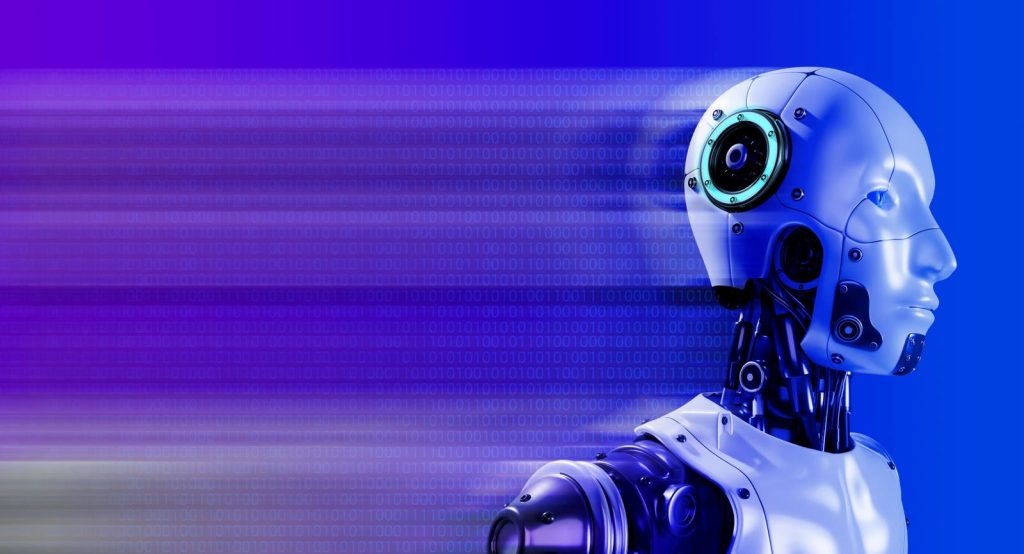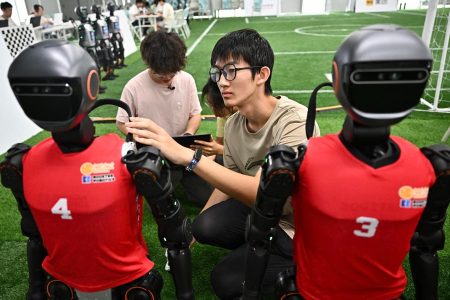A decade ago the DARPA Robotics Challenge pumped tens of millions of dollars of investment into American robotics innovation, stimulating development of everything from humanoid robots to self-driving cars. Today overall government investment seems to be slowing, putting U.S. robotics leadership at risk in a world that is rapidly building better humanoid and other form factor robots. That’s in spite of past success that has made the U.S. a hotbed of humanoid robotic development.
“I think the race is on,” Apptronik CEO Jeff Cardenas told me recently in a TechFirst podcast. “I think one of the reasons that you see the U.S. leading right now is because the U.S. government has invested so much money.”
There has been a ton of innovation recently:
- Amazon just unveiled Digit, a humanoid robot for its warehouses, thanks to its partnership with Agility Robotics
- Tesla is building Optimus, a humanoid robot for everyone
- Sanctuary AI is building “the world’s-first human-like intelligence in general-purpose robots” in Vancouver, Canada
- Figure.ai is building the world’s future workforce in robotic form
- Fourier Intelligence is building the GR-1 in China
- Boston Dynamics built Atlas, a humanoid robot for NASA, and continues to build high-end robots
Many of these company have teams with roots in the DARPA challenges, Cardenas says. And DARPA’s tens of millions of dollars injected innovation into dozens of companies.
While there’s still significant innovation and investment, including President Biden’s 31 regional tech hubs and the National Science Foundation’s foundational research in robotics programs, Cardenas says it’s petering out. And that’s a major risk for the US in terms of international competitiveness.
Capable and cheap robots are still science fiction, to a large degree. But they’re close enough that we can see a near or mid-term future—five years? ten years?— in which they are science fact. And that coming-soon reality has the potential to change almost everything in our economic system.
Cheap and capable robots enable onshoring of production in first-world countries with high labor costs. They improve efficiency and boost output, and are likely—in time—to completely change the economics of both major infrastructure building programs or environmental reclamation projects as well as the very nature of work itself. Just as information dissemination and software replication costs have approached zero thanks to the digital revolution and the internet, the cost of physical labor are likely to also trend towards zero as the robotics innovations we’re seeing almost daily continue, accelerate, and result in ever-more capable machines that work for us at an ever-cheaper cost per unit of work.
They’ll also require a renegotiation of our basic social contract, and likely solutions such as universal basic income, perhaps via Bill Gates’ tax-the-robots suggestions.
But there are risks involved nationally if the U.S. doesn’t continue to boost innovation in robotics. Those risks are obvious from fairly recent history.
“The U.S. invented the very first industrial robot and effectively lost the first wave of industrial automation.,” Cardenas says. “It was invented in the late 50s, went into a General Motors factory in the early sixties … it was called the Unimate arm and the company that built it, Unimation actually ended up folding in the 80s.”
The company didn’t get the funding it needed, Cardenas says. It was ultimately bought by Westinghouse, then sold to a Swiss company Stäubli in 1988.
A possible result is that robotic arms and other industrial robots are largely built today by Fanuc, based in Japan, Yaskawa, also out of Japan, Kuka, which is based in Germany but owned by Chinese appliance manufacturer Midea Group, and Swiss ABB, based largely out of the country included in its name. These “big four” own 57% of global market share, according to Statzon. Other significant players include Denso Corporation, Mitsubishi, Nachi-Fujikoshi, Panasonic and Kawasaki Heavy Industries.
Most countries see the importance of robotics research and development for the retention and expansion of economic power. According to the International Federation of Robotics, countries and regions that have invested significant national resources and programs in robotic development recently include:
- Australia
- Canada
- China, where robotics is listed as a key industry in the nation’s current five-year plan
- European Union
- Germany
- Italy
- Japan
- Korea
- Sweden
- Switzerland
- UK
In the U.S., as of December of last year, national investment into robotics is taken from parts of funds for the Artemis lunar project, NASA’s Mars rovers, the Department of Defense budget and the National Science Foundation’s NRI, National Robotics Initiative 3. (NRI-3 is currently archived after having invested about $250 million over 12 years into 300 projects.) The nation’s last robotic roadmap detailing how robots could be used for economic growth, quality of life and empowerment of people dates from 2020.
Early investment spurred innovation. But new vision—and new money—is now needed to continue the growth, Cardenas says.
“There has not been as much government funding in this space since the DARPA Robotics Challenge,” Cardenas said. “And I think that if the U. S. wants to continue to lead, the government’s going to need to step in a big way and really inject more money into it.”
A potential argument against this is that industry and venture capitalists are funding the growing innovation just fine. Global investment in robotics for 2023 reached $8 billion in July, according to Robotics Business Review.
But that funding is likely to be largely later stage, not the early fundamental research type of funding that governments tend to be able to do better than companies, who need immediate returns, or investors, who are also looking for relatively quick profits.
Also, that investment is not guaranteed to happen in the U.S. According to Robotics Business Review’s Dan Kara, the majority of deals are not being invested inside the United States.
“Companies based in China received the majority of the rounds (18), which resulted in a total funding inflow of $501 million,” he says. “Firms based in the USA attracted $1.2 billion in funding (coming from 14 rounds), with investment into autonomous vehicle technology provider Aurora accounting for $820 million of that sum.”
So total investment dollars are higher in the U.S., but so is development cost, with the likely result being that innovation per dollar is more expensive in the U.S. than in China. So U.S. investments might need to be 2-3X Chinese investments to have similar impact.
“I really want to see the US government respond,” says Cardenas. “This is a race that I think is important long term.”
Read the full article here









